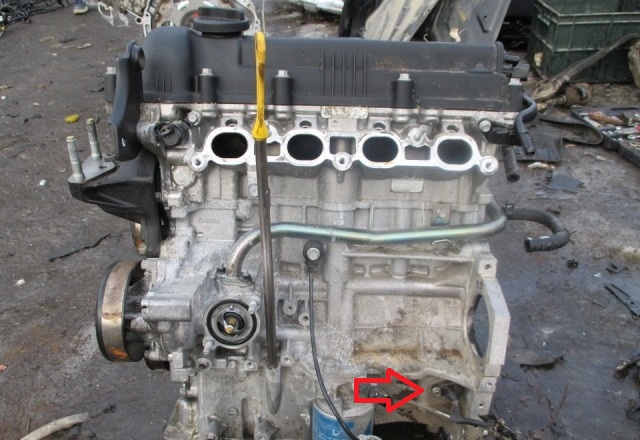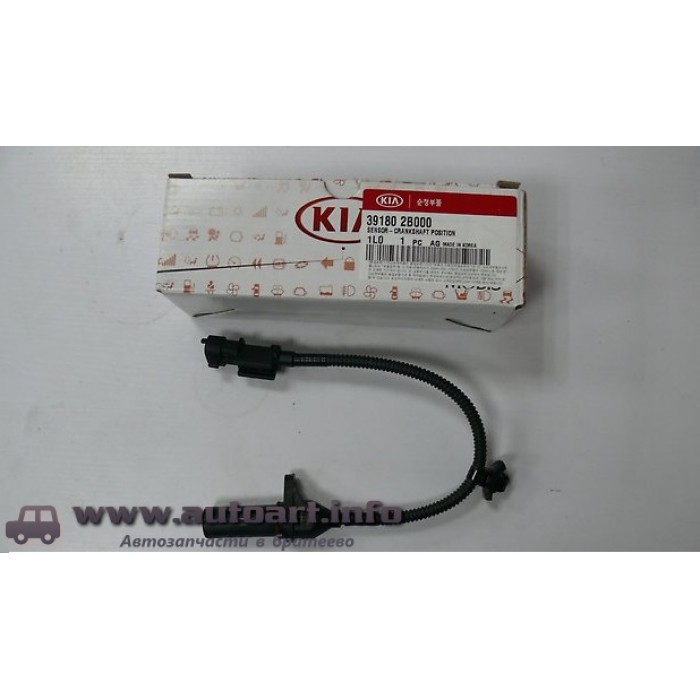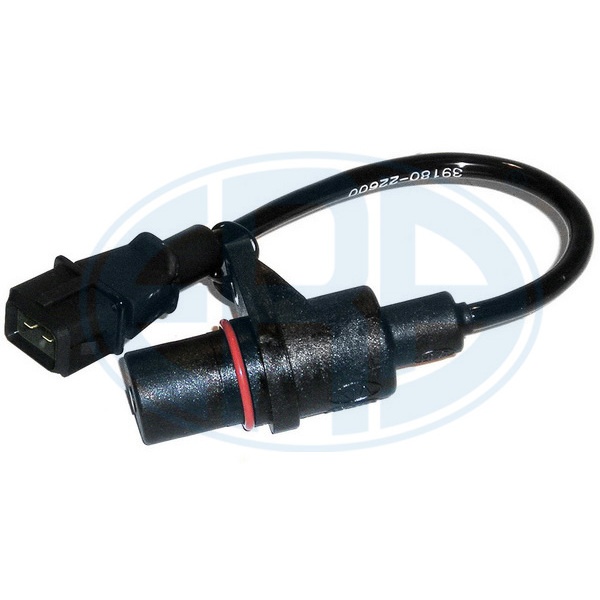
Hyundai Accent Crankshaft Sensor
Content
In cars of the Hyundai Accent family, the crankshaft position sensor (hereinafter referred to as DPKV) is installed in the engine compartment, from the end, above the mud visor. This is typical for Hyundai Accent MC, Hyundai Accent RB.
On the Hyundai Accent X3, Hyundai Accent LC, the DPKV is installed under the thermostat housing.
"P0507" is the most common error displayed on the dashboard of owners of the third generation Hyundai Accent. The reason is a faulty crankshaft sensor.

The controller is designed to read the number of teeth on the crankshaft, transfer data online to the electronic control unit (ECU).
The on-board computer analyzes the received data, increases, decreases the crankshaft speed and restores the ignition timing.
The average service life of the controller is 80 thousand km. The sensor is not serviceable, completely replaceable.
With the systematic operation of the car, the DPKV wears out, as evidenced by the unstable operation of the engine. The process of self-replacement is not at all complicated, but requires care on the part of the repairman.
Crankshaft sensor for Hyundai Accent: what it is responsible for, where it is located, price, part numbers
What is the controller responsible for?
- Fuel injection phase synchronization;
- Supply of charge to ignite the fuel in the combustion chamber.
The timeliness of the fuel mixture supply to the combustion chamber depends on the functionality of the controller.
DPKV reads the number of teeth, sends the received data to the ECU. The control unit increases or decreases the number of revolutions.
The angle of inclination of the teeth is six degrees. The last two teeth are missing. The "cut" is made to center the crankshaft pulley at top dead center TDC.
Where is the controller located: In the engine compartment, above the mudguard. Access to the means of prevention through the top of the engine compartment.
On Hyundai modifications of the first and second generation, the DPKV is installed under the thermostat housing.
Signs of a bad crankshaft sensor:
- The engine does not start;
- Difficult start of the engine;
- Idling is unstable;
- A sudden drop in the power of the power unit;
- Detonation at work;
- Passive acceleration dynamics;
- Increased fuel consumption;
- When driving “downhill”, the engine lacks power, it “requires” a transition to a lower row.
These symptoms are also signs of other problems. Carry out comprehensive diagnostics using digital equipment for data objectivity.

| Title/Catalog Number | Price in rubles |
|---|---|
| Lucas SEB876, SEB877 | 1100 to 1350 |
| Topran 821632 | 1100 to 1350 |
| Meat and Doria 87468, 87239 | 1100 to 1350 |
| Auto registration AS4668, AS4655, AS4678 | 1100 to 1350 |
| Standard 18938 | 1100 to 1350 |
| Hoffer 7517239 | 1100 to 1350 |
| Mobiltron CS-K004 | 1100 to 1350 |
| Акцент Hyundai: Hyundai / Kia 3918023910 | 1100 to 1350 |
| TAGAZ CS-K002 | 1100 to 1350 |
| 7517222 | 1100 to 1350 |
| SEB1616 | 1100 to 1350 |
| Kavo Chasti ECR3006 | 1100 to 1350 |
| Valeo 254068 | 1100 to 1350 |
| Delphi SS10152-12B1 | 1100 to 1350 |
| FAE 79049 | 1100 to 1350 |
Technical characteristics of the DPKV for the third and fourth generation Hyundai Accent:
- Winding resistance: 822 ohms;
- Winding inductance: 269 MHz;
- Minimum sensor voltage amplitude: 0,46 V;
- Maximum amplitude: 223V;
- Dimensions: 23x39x95mm;
- Weight: 65 grams.
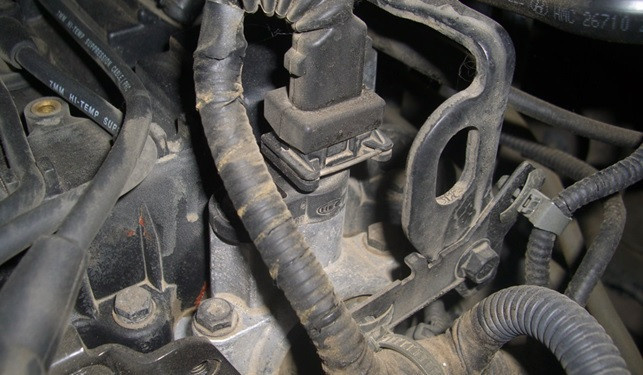
Self-diagnosis instructions
You can check the controller with a multimeter. Most motorists have equipment in the "garage".
- We open the hood, on the mud visor we find a block with wires from the controller. disable;
- We connect the terminals of the multimeter to the DPKV. We measure the resistance. Permissible range 755 - 798 ohms. Exceeding or understating is a sign of a malfunction.
- We make a decision to replace, install new equipment.
The location of the DPKV may be different depending on the generation of the technical tool.
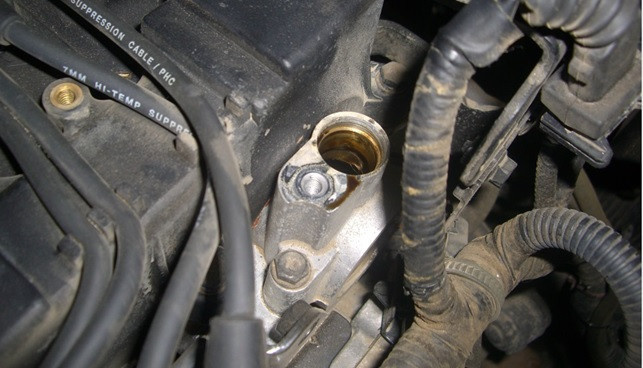
Causes of premature wear of DPKV
- long-term operation;
- manufacturing defects;
- external mechanical damage;
- getting sand, dirt, metal chips into the controller;
- breakage of the sensor;
- damage to the DPKV during repair work;
- short circuit in the on-board circuit.
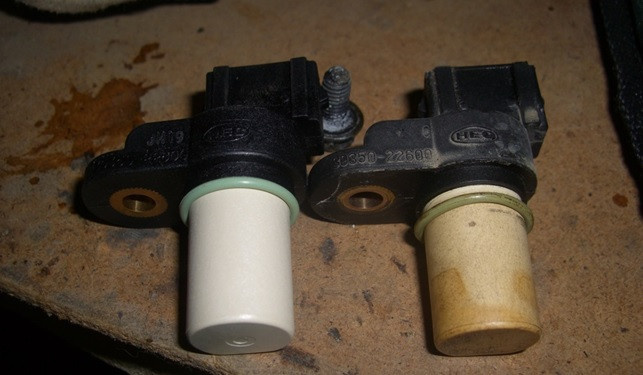
How to replace the crankshaft sensor on a Hyundai Accent car yourself
The time interval for prevention is 10-15 minutes, if there are tools - a spare part.

DIY step-by-step guide to replacing:
- we put the car on a flyover (inspection hole);
- above the wing we find a block with wires, disconnect the terminals;
- unscrew the DPKV seal (key to "10");
- we remove the controller, carry out troubleshooting of the seat, clean it from the remnants of dust, dirt;
- insert a new sensor, install the frame in reverse order.
Do-it-yourself replacement of the DPKV with a Hyundai Accent is completed.
